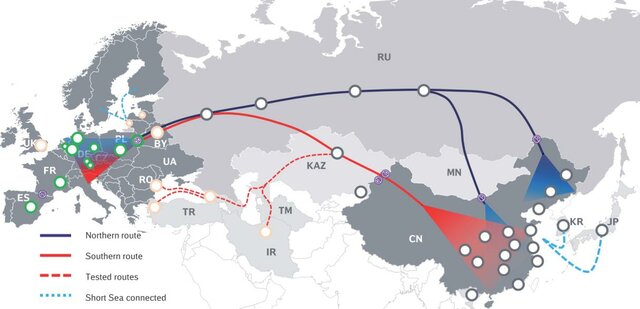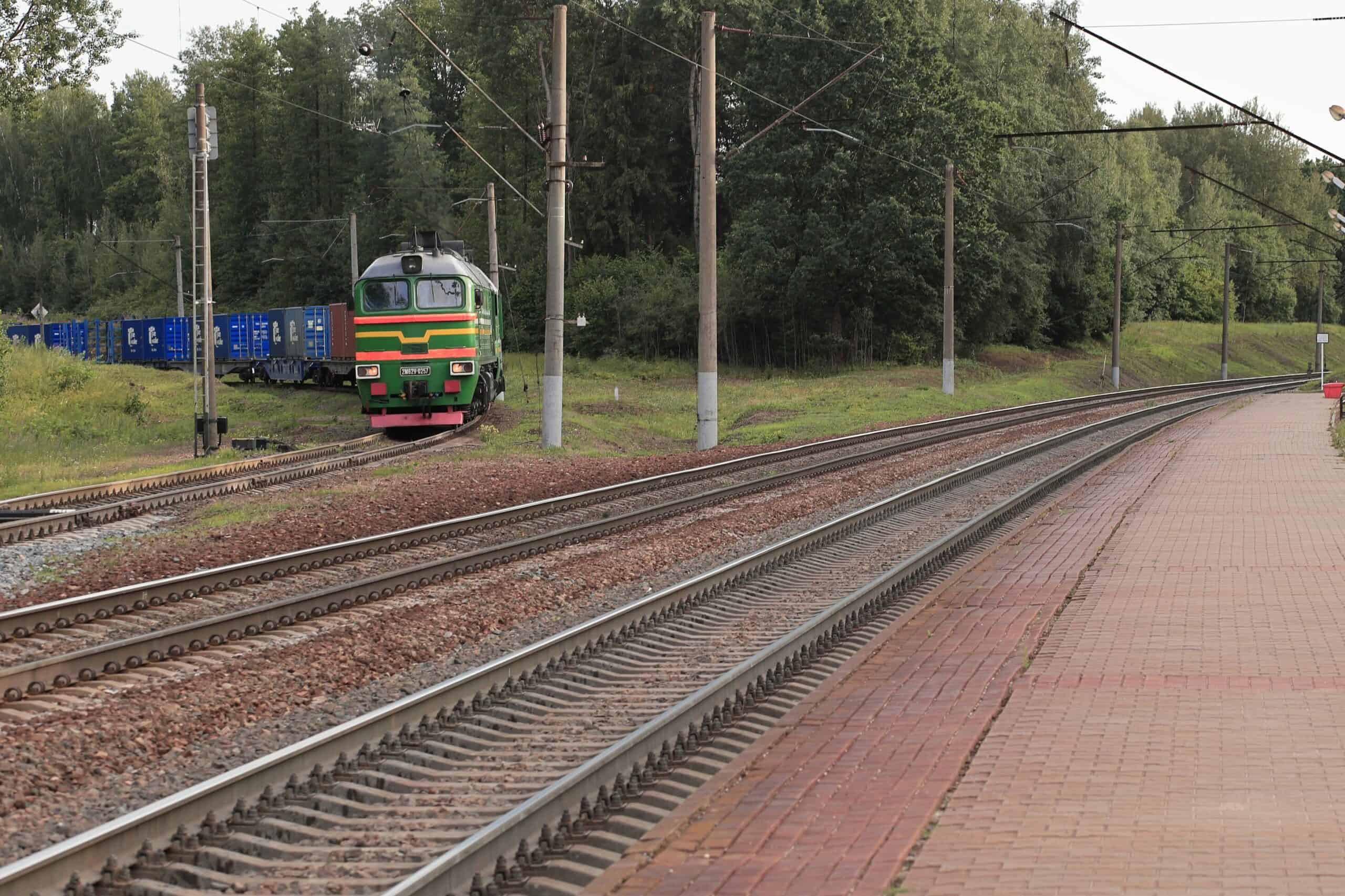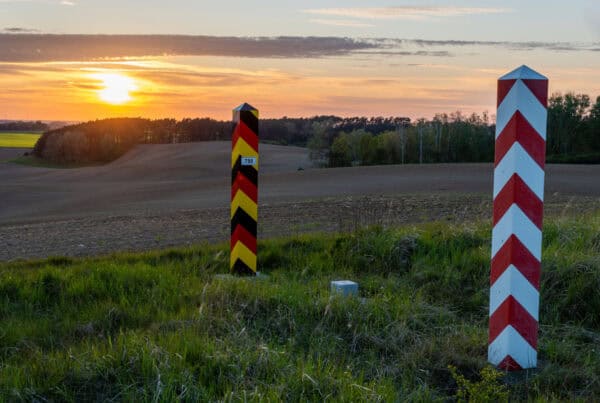Aliaksei Patonia – Oxford Institute for Energy Studies
Aliaksei (Alex) Patonia is a Research Fellow at the Energy Transition Research Initiative of the Oxford Institute for Energy Studies (OIES). Before moving to the UK, Alex was based in Southeast Asia where he conducted research on the development of energy and infrastructure projects in Cambodia, Vietnam, and Laos. Apart from his work at OIES, Alex has cooperated with various research institutions and think tanks such as the GMFUS of Washington, DC, PISM of Warsaw, and the EPG of Bucharest. His commentaries and op-eds appeared, among others, in The Diplomat, EU Observer, Geopolitical Monitor, Der Tagesspiegel, and World Economic Forum.
This contribution is part of the book “The Dragon at the Gates of Europe: Chinese presence in the Balkans and Central-Eastern Europe” (more info here) and has been selected for open access publication on Blue Europe website for a wider reach. Citation:
Patonia, Aliaksei, Belarus: a strategic point for China’s Belt and Road Initiative, in: Andrea Bogoni and Brian F. G. Fabrègue, eds., The Dragon at the Gates of Europe: Chinese Presence in the Balkans and Central-Eastern Europe, Blue Europe, Dec 2023: pp. 397-408. ISBN: 979-8989739806.
1. Introduction
At the moment, the EU and China are each other’s largest trading partners (Leali, 2020). In particular, in 2022, China accounted for around 9 percent of goods exports of the entire EU and 20 percent of the EU good imports (Eurostat, 2023). This should be of no surprise, since Europe appears to be the prime investment destination for China’s Belt and Road Initiative – Chinese Government’s global infrastructure development strategy that aims to “facilitate connectivity, unimpeded trade, financial integration, and people-to-people bonds” (Green Finance & Development Center, 2023).
While sea transportation dominates the movement of goods between China and Europe, railroads play a crucial connecting role. This is so primarily due to the fact that it only takes around 15-18 days to ship products from China to Europe on rail freight, while traditional sea shipping will take at least up to 45 days (Super International Shipping, 2023).
In this connection, the main railroads leading from Asia to Europe play crucial role in this process, as they represent critical infrastructure without which such a high level of connectivity and economic interaction between China and Europe would not be possible. In this respect, unexpectedly, Belarus – a small country in Eastern Europe placed between Russia and the EU – appears to play a strategic role in the Chinese global infrastructure development strategy.
2. The importance of Belarus
Belarus, geographically placed on the main rail track happens to represent a key hub for the delivery of Chinese goods to the EU (see Figure 1).
Figure 1. Key railway routes between China and Europe

Source: Binova, Brezina, and Mracek (2018)
Belarus has a well-developed railroad system capable of handling a high volume of heavily loaded cars. In the past, it played a crucial role as the Soviet Union’s gateway to Europe, with the most important rail tracks leading from the USSR to the Eastern and Western Blocks crossing the entire territory of the Belarusian SSR. After the fall of communism and the Iron Curtain, new infrastructure was added to the existing pieces. This allowed the newly independent country to continue its role as a bridge between the East and West. Although it is theoretically possible to expand Belarus’ railroad network with new tracks and auxiliary routes, budget constraints resulting from the country’s slow economic development and international sanctions are likely to delay any such improvements until the future.
These constraints coupled with the current geopolitical crisis in the region make it unlikely for the nation to heavily invest in additional infrastructure development. As a result, despite having the potential to obtain an even more sophisticated railroad network that would be able to accommodate more trains and cargoes to capitalise on the strategic location of the country, Belarus is still greatly relying on a slightly updated legacy of the Soviet transport network. Nevertheless, at the moment, at least eight of the most important rail container routes on the China-Western Europe trade pass through Belarus (Chan, 2018). This enables cargo to move between China and Germany via Kazakhstan, Russia, Belarus and Poland faster by three weeks.
Although the freight cost in this case would be about 60-70 percent higher than in the case of maritime transport, in 2017 more than 3,000 Sino-European trains used the railroad network of Belarus (ibid). This situation remained unchanged despite the near-complete halt in political relations with the West following the extensive post-election protests of 2020 and the resulting political crisis in Belarus. Nor did it change after Russia’s full-scale invasion of Ukraine in 2022 when the Belarusian regime was one of the very few to openly support the aggressor. In fact, although most of the border crossings between Poland and Belarus were gradually closed after 2020, this did not significantly affect the rail freight (Euronews, 2023 and Railway Supply, 2023).
In particular, while the delivery of commodities by road experienced significant challenges, which resulted in this means of transportation becoming a less popular logistical option, the flow of the railway cargo traffic actually increased due to some spillover (Rail Freight, 2023). As a result, despite the relationships between Belarus and the European Union reaching their all-time low point, the transfer of goods between China and the EU was not jeopardised.
3. Belarus’ strategic partnership with China
Belarus does not happen to be the only East European nation with direct infrastructure access to the central part of Europe. Nevertheless, its advantageous position coupled with significant challenges associated with neighbouring Lithuania and Ukraine – the only two alternative countries through which Chinese goods could enter the heart of the continent via railroad – make it of strategic importance for China. Here, the on-going full-scale war with Russia turns Ukraine into a practically unreachable partner for the Chinese commodities delivered by train.
Similarly, in the midst of a significant deterioration in the political relationships between Beijing and Vilnius that followed the official opening of Taiwan’s diplomatic mission in Lithuania’s capital, it is unlikely that China would rely on the country as a strategic transit partner (Tian and Sytas, 2021). Since Belarus occupies such an important position in China’s infrastructure development strategy, the latter pays close attention to the political developments in the country. In fact, with strong authoritarian regimes present in both countries, the cooperation between Belarus and China has so far always been stable and did not have any major conflicts similar to that with Lithuania.
China was also the first country to officially congratulate Belarus’ dictator Lukashenka on his “re-election” in 2020 when the voting results were disputed and the country experienced the greatest social unrest in its modern history (BELTA, 2020 and Euronews, 2021). Last year, the presidents of both countries officially “upgraded” the countries bilateral relations to “an all-weather comprehensive strategic partnership” (ibid). Earlier this year, President Xi emphasised that “the China-Belarus friendship is unbreakable, and the two sides should constantly enhance political mutual trust and remain each other’s true friends and good partners” (Ministry of Foreign Affairs, 2023).
Despite Lukashenka’s efforts to translate the stable bilateral political relations into economic and geopolitical gains beyond the transfer of Chinese goods, he fell short of significant success. Here, the main intention was to use China’s credit lines to modernise the Belarusian economy and political support to balance the dependency on Russia (Marin, 2017).
However, it looks like the two sides had quite different expectations from their cooperation, as China’s share in Belarus’ foreign investments has not exceeded 3 percent (Jakóbowski and Kłysiński, 2021). This is so most likely since the idea to turn Belarus into China’s main hub within the Eurasian Economic Union and then get access to bigger markets of Russia and Kazakhstan faced strong opposition of Russia itself (ibid). As a result, the development of relations with China did not lead to a tremendous transformation of the country and has so far been mostly realised in the form of Chinese export loans for infrastructure projects (Yeliseyeu and Aleszko-Lessels, 2023). This ‘limited engagement’ of China in Belarus could potentially be explained through the recognition of Minsk as Russia’s traditional ‘sphere of influence’.
Overall, however, from a strategic perspective, investing in a country that is gradually trading off its economic and political independence to its eastern neighbour at the expense of massive support for the existing regime may not make sense anymore, if major negotiations and deals could instead be made with the ‘big brother’ in Moscow. In these circumstances, relying on Belarus as a Chinese stronghold in Eastern Europe for spreading China’s influence to the countries of the former Warsaw Pact may no longer be extremely relevant.
4. What’s next for China in Belarus?
Atlthough it became clear that the original plan to modernise Belarus through Chinese investments did not work, it does not mean that Lukashenka’s regime will no longer be interested in maintaining strategic relationships with China. In fact, at the moment, these relationships seem to have moved to a more personal level – that of Lukashenka’s family members.
In particular, in June 2023 it became known to the press that Mikalai, his youngest son, was studying at Peking University (Butko, 2023). Although this news appears to contradict previously disseminated information on Mikalai’s domestic enrolment at Belarus’s top university (Tochka, 2023), it sends a clear message of how much the relationships with China is valued by the Belarusian regime. This personal attachment of the Belarusian regime to China is of clear importance for China itself.
With no sign of fast democratic transition in the former at the moment, it becomes extremely useful for the latter to further invest in supporting good long-term relationship with the ruling family, in general, and with the current president’s potential successor. Though it may look like a risky approach in the long term if Belarus’ political climate changes, at the moment, this interaction in ‘good faith’ helps to make sure that the delivery of the Chinese goods to Europe are not disturbed in the years to come, especially given China’s plans to further increase the number of freight trains running to the European Union (CGTN, 2023).
Since the country does not seem to have any intention to scale down its ambitious Belt and Road initiative, Belarus is going to be of crucial importance for its global infrastructure development strategy. At least as long as it controls the rail tracks.
Bibliography
BELTA. “Foreign leaders congratulate Lukashenko on re-election”. August 10, 2020. https://eng.belta.by/politics/view/foreign-leaders-congratulate-lukashenko-on-re-election-132463-2020/
Binova, Helena, Brezina, Edvard, and Mracek, Vladimir. “Comparison sea and rail transport of container.” VII. International Scientific Conference of the Faculty of Transport Engineering, September 6-7, 2018.
Brattberg, Erik and Soula, Etienne. “Europe’s emerging approach to China’s Belt and Road Initiative”, Carnegie Endowment for International Peace, October 18, 2018. https://carnegieendowment.org/2018/10/19/europe-s-emerging-approach-to-china-s-belt-and-road-initiative-pub-77536
Butko, Mikhail. “Belarusian dictator’s son suffers at Peking University: Lukashenko”, World Today News, June 14, 2023. https://www.world-today-news.com/belarusian-dictators-son-suffers-at-peking-university-lukashenko/
CGTN. “China increases number of freight trains running to Europe”. July 02, 2023. https://news.cgtn.com/news/2023-07-02/China-increases-number-of-freight-trains-running-to-Europe–1l6PwpfqzVC/index.html
Chan, Louis. “Belt and Road Initiative: The Role of Belarus”, HKTDC Research, April 20, 2018. https://research.hktdc.com/en/article/MzgzMDEyODc4
Euronews. “Revolt, repression and reprisals: A look back at a year of turmoil in Belarus”. August 09, 2021. https://www.euronews.com/2021/08/09/revolt-repression-and-reprisals-a-look-back-at-a-year-of-turmoil-in-belarus
Euronews. “All roads blocked between Poland and neighbouring Belarus as tensions flare”. February 22, 2023. https://www.euronews.com/2023/02/21/all-roads-blocked-between-poland-and-neighbouring-belarus-as-tensions-flare
Eurostat. “China-EU – international trade in goods statistics.” Eurostat Statistics Explained, February 2023. https://ec.europa.eu/eurostat/statistics-explained/index.php?title=China-EU_-_international_trade_in_goods_statistics
Green Finance & Development Center. “Green Belt and Road Initiative (BRI) Lab”. 2023. https://greenfdc.org/green-belt-and-road-initiative-bri-lab/
Jakóbowski, Jakub and Kłysiński, Kamil. “The non-strategic partnership. Belarus-China relations”. OSW. January, 2021.
Leali, Giorgio. “China Topples US as EU’S Top Trade Partner over 2020.” Politico, February 15, 2021. https://www.politico.eu/article/china-topples-us-as-eus-top-trade-partner-over-2020/.
Marin, Anaïs. “Minsk-Beijing: What kind of strategic partnership?”, IFRI, June, 2017. https://www.ifri.org/sites/default/files/atoms/files/marin_minsk_beijing_strategic_partnership_2017.pdf
Ministry of Foreign Affairs of the People’s Republic of China. “XI Jinping holds talks with president of Belarus Aleksandr Lukashenko”. March 01, 2023. https://www.fmprc.gov.cn/mfa_eng/zxxx_662805/202303/t20230303_11034766.html
Rail Feight. “Poland-Belarus border closes for trucks, trains keep running”, May 31, 2023. https://www.railfreight.com/railfreight/2023/05/31/poland-belarus-border-closes-for-trucks-trains-keep-running/?gdpr=deny
Railway Supply. “Closure of Poland-Belarus border for trucks, while trains continue operating”. May 31, 2023. https://www.railway.supply/en/closure-of-poland-belarus-border-for-trucks-while-trains-continue-operating/
Super International Shipping. “Rail freight from China.” 2023. https://super-internationalshipping.com/rail-freight-from-china/ Tian, Yew Lun and Sytas, Andrius. “Lithuanian diplomats leave China as relations sour over Taiwan”. Reuters, December 15, 2023. https://www.reuters.com/world/china/lithuanias-diplomatic-delegation-china-leaves-beijing-2021-12-15/
Tochka. “Aliaksandr Lukashenka told where his youngest son Nikolay is stydying”. January 06, 2023. https://tochka.by/articles/policy/aleksandr_lukashenko_rasskazal_gde_uchitsya_ego_mladshiy_syn_nikolay/
Yeliseyeu, Andrei and Aleszko-Lessels, Olga. “Amid sunny rhetoric, Chine restricts investment in Belarus”. Choice, February 14, 2023. https://chinaobservers.eu/amid-sunny-rhetoric-china-restricts-investment-in-belarus/





